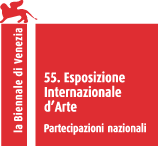e, haircut
a haircut by 9 hairdressers at once (second attempt)
year: 2010
material: HD video
time: 28 min
credits: Commissioned by Yerba Buena Center for the Arts, San Francisco
director of Photography: Daniel Gorrell
lighting and Camera Operator: Andrew Eckmann
sound: Anthony Ranville
gaffer: Daron Melkonian
assistant: Alfredo Solis
production Photography: Tomo Saito
sound sweetening: Taku Unami
coordination: Julio Morales and Kim Silva
production: Yerba Buena Center for the Arts
curator: Julio Cesar Morales
location: Zindagi Salon, San Francisco
artist’s notes:
We live within society. Which makes it rather difficult to live without associating with others. Among those associations are collaborations on various scales, from discussing with friends what to eat for dinner, to working on clean energy development as part of a government project team. In any case, we stumble along, talking things over with others, sometimes agreeing with each other, sometimes not. It struck me that there might be a way to organize and document such collaborations as situations of a slightly intense nature: because, I reasoned, such collaborative efforts would reflect the society in which we live, and because it would reveal our beauty as humans, as well as our uglier side.
The first thing I did was to have several hairdressers cut the hair of a single model. The second was to have five piano students play a single piano. The third was to have five poets write a single poem. The fourth was to have multiple potters form a single piece of pottery.
In this series of projects, I took particular care wherever possible to assemble individuals with different backgrounds. Reflecting the characteristics of its location – San Francisco – "Haircut" involved people of various nationalities, and numbers of years at the job; for "Piano" the backgrounds consisted of multiple musical genres participants were studying at university: jazz, improv, classical; for "Poet" I assembled poets of various orientations and styles within the genre of contemporary poetry, and for "Pottery" the ceramicists approached their work from varying standpoints: that of a potter pursuing their art while tucked away in the countryside, the owner of a pottery workshop, someone who makes documentary films on ceramics, someone who took up pottery in their later years, and so on.
We tend to stress "results," and that includes in art. In the sporting world, exemplified by the Olympics, winning a gold medal is imperative. But that person's life goes on, whether they win a gold medal or not. Haruki Murakami wrote somewhere that unlike watching the Olympics on television, watching them in the flesh is mind-numbingly boring. Why? Because the contest lasts just for an instant, and there is the preparation time before and after, and then before and after the Olympics, there is the time the athlete spends living their life. The real world of the athlete, not shown on TV, is presented there for all to see. The "result" comes in a moment. But crammed into the process prior to and following are a great mass of complex things.
Documenting the process of collaboration is also a rebellion of sorts against reserving our admiration solely for results. Even if a haircut turns out wrong, hair grows, then you can go get it cut again. If a performance does not go well, play the piece again. Sometimes one can write a good poem, sometimes one cannot. Even in ceramics, in the end, until a piece goes into the kiln for firing, no one knows how it will turn out. Rather than depending on whether the result is good or bad, I'd like to focus on the act and the process of “making” something, and having done so, start by taking an affirming view of the act of making per se.
アーティストノート:
僕らは社会の中に生きている。ならば、他者と関わらずに生活をすることはなかなか難しい。そこにはさまざまな大きさの共同作業が含まれる。友人同士でディナーになにを食べるのかを話し合うことから、国家プロジェクト・チームの一員としてクリーン・エネルギー開発事業に従事するといったことまで。いずれにしても僕らは他者との話し合いの中で、ときには合意し、ときには敵対しつつ、なんとかやっている。たとえばこうした共同作業を少しインテンシブな状況として組織し、記録することはできないだろうか、と考えた。なぜならば、こうした共同作業の中に僕らの社会は反映されるだろうし、そこに僕ら人間の美しさもあるいは醜さも表れるだろうと思ったからだ。
一つ目に行ったのは、複数の美容師にひとりのモデルの髪をカットしてもらうということ。二つ目は一台のピアノを五名のピアノ科の学生たちに弾いてもらうということ。三つ目は、五名の詩人たちにひとつの詩を書いてもらうということ。四つ目は複数の陶芸家にひとつの陶器を形作ってもらうというもの。
一連のプロジェクトの中でとくに気をつけたのは、できるかぎりばらばらのバックグラウンドを持つ人びとに集まってもらうということ。「ヘアカット」ではサンフランシスコという場所の特性が反映し、さまざまなナショナリティの人びと、また仕事の経験年数の異なる人びとが参加し、「ピアノ」ではジャズ、即興音楽、クラシックという大学での複数の音楽ジャンルが背景となり、「詩」では現代詩というジャンルの中でさまざまな方向性、文体の違う詩人が集められ、「陶芸」では田舎にこもって陶芸を行う者、陶芸ワークショップの経営者、陶芸のドキュメンタリー映画を作るひと、年齢を重ねてから陶芸をはじめたひとなど異なる立場の陶芸家が参加した。
アートにおいてもそうだけれども、僕らは「結果」を重視する。オリンピックなどに代表されるスポーツの世界では金メダルを獲得することが至上命令となる。しかし、そのひとが金メダルをとったにせよ、とれなかったにせよ、そのひとの人生はそのあとも続いていく。村上春樹がどこかで書いていたけど、テレビを通して見るオリンピックとは違って、現場で見るオリンピックはとても退屈なものであるという。なぜなら試合は一瞬であり、その前後に準備時間があり、さらにオリンピック後先にはその選手の人生の時間がある。テレビが映さなかった選手たちの実際の世界がそこには広がっている。「結果」は一瞬のうちに訪れる。でも、それ以前、以後のプロセスの中には膨大で複雑な物事がつまっている。
共同作業のプロセスを記録する、ということは「結果」のみを称揚することへのひとつの抵抗でもある。ヘアカットが失敗しても髪はのびるし、またカットに行けばいい。演奏がうまくいかなかったらまた弾けばいい。いい詩が書けるときもあるし、書けないときもあるだろう。陶芸だって、結局のところ窯に入れて焼いてみないとわからない。結果の善し悪しによらず、まずはなにかを「作る」という行為、そのプロセスに着目すること、その上でぼくはひとまず「作る行為」そのものを肯定的に捉えてみたいと思う。
participants (2010/8/1):
Victor A Camarillo, Kristie Hansen, Nicole Korth, Nikki Mirsaeid, Olga Mybovalova, Sondra Osorio, Anthony Pullen, Brian Vu, Erik Webb, Karen Yee







